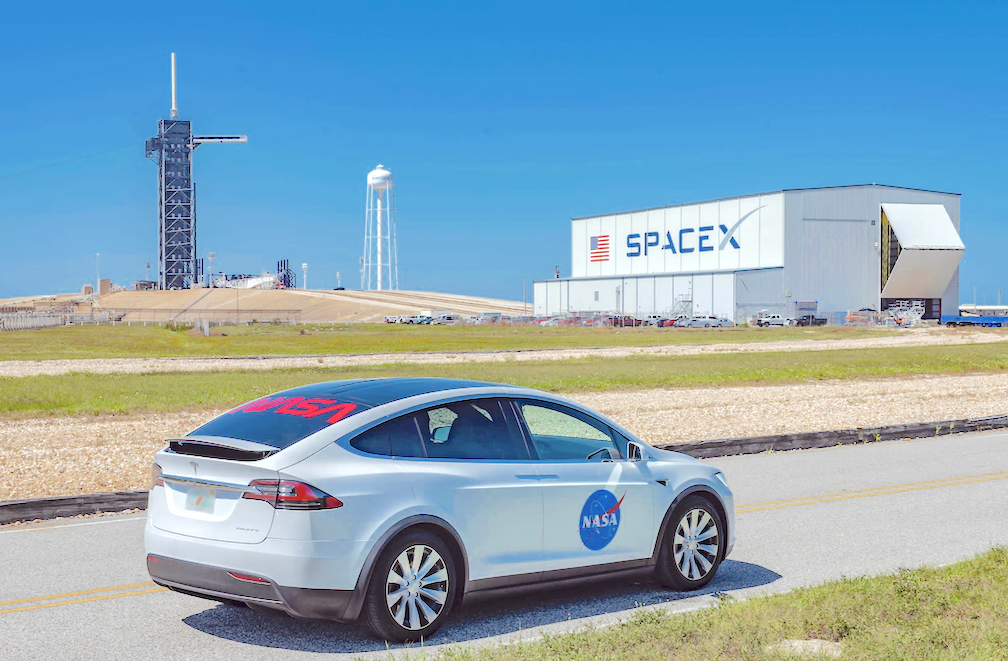
SpaceX’s Starlink unit recently filed a request with the FCC to begin connecting its LEO satellite network to moving vehicles (cars, trucks, jets, ships, etc.). We discussed the implications of satellite comms to the auto/eVTOL market in a brief report last week Starlink and Autonomous Cars. This topic appears to be moving even faster than we had anticipated. We share a few thoughts:
- The overlap between cars and comms is obvious and, in our opinion, about to become highly relevant. It’s interesting that our phones (ASP <$1k) have advanced communication/OTA features while our cars (ASP approx. $40k) tend to be sold ‘untethered’ to any robust comms network. We estimate that this year we will reach 1.3 billion light vehicles in use on earth. Including aircraft, ships and commercial vehicles (from Class 8 trucks to tractors, earth-moving equipment) may materially exceed 1.5 billion ‘moving vehicles’ in use today.
- The development of wireless communications and cars is extremely nascent. Of the more than 250 million vehicles on the road in the US, we estimate that no more than 20% to 25% have anything better than basic GPS/sat-nav. We estimate substantially less than 1% of vehicles on the road in the US today are capable of OTA updates of firmware.
- Autonomous cars may require sat comms for enhanced capability. We expect autonomous/electric cars to eventually resemble a utility/public good where the marginal cost of transport per mile traveled approaches zero and upon which a substantial portion of the any nation’s GDP is highly dependent. Additionally, autonomous networks may require sat comms for ‘triple-redundant’ safety and security not unlike today’s aircraft and air traffic control systems.
- Try this thought exercise… imagine how Apple might potentially go about developing a car and deploying an internet-of-cars (IoC) transportation network. The next time you get behind the wheel of your car, consider how little has changed in terms of connectivity since your first car. In our opinion, the connectivity of the average car is a ‘nostalgic’ experience that is ripe for major disruption over the next engineering cycle. (Apple is covered by Katy Huberty.)
- We’d expect to see early introduction of Starlink into the commercial/logistics market. According to an article by Michael Sheetz at CNBC, citing company job postings, SpaceX is planning to build a new Starlink equipment factory in Austin, TX. (The company did not comment on the article.) We believe such a potential location near Tesla’s Austin gigafactory (where it would make the Cybertruck, Semi and, we believe, other fleet oriented products) would make a lot of sense.
- Autonomous car networks can create and consume massive amounts of wireless data. Our collaborative work with the Morgan Stanley Global Telecom team suggests that autonomous cars can produce as much as 40 TB of data/hour, which is equivalent to 1 to 3 thousand years of iPhone data usage. Of this amount, we estimate the wireless data that exist/enters the car to be on the order of 50 to 500 GB/month. Our simulation of total wireless data transmission from AVs approached 5,000 EB (exabytes) annually… or many hundreds of times higher than the total amount of global wireless data transmission (all devices) today.
- Mobility markets allow for superior pricing power. Starlink’s current beta is focused on the home broadband market, where data pricing has compressed significantly over time due to robust terrestrial offerings and customer limitations. However, mobility markets like maritime and in-flight connectivity have no fixed-line competitors and can therefore offer significantly higher yields for Starlink’s capacity. For example, we estimate that per gig pricing under the $99/month beta program is well below $1 assuming normal usage patterns, while current business jet data plans are priced well in excess of 100x that. Additionally, expensive user terminals become less of a hurdle in markets where customers are already spending $10s or $100s of thousands for connectivity equipment.
We would not be surprised to see more auto OEMs and mobility players explore collaboration/pilot programs in the area of LEO satellite communication in the near to medium term. There are many players rolling out large and sophisticated internet of cars AI/ML fleets (i.e. Tesla has a fleet of roughly 1.3 million vehicles in service today, rising to 30mm to 40mm by 2030e) which could potentially serve as an important ‘captive customer’ for a LEO player. At the same time, various LEO operators can provide a redundant, resilient cybersecure transportation ‘moat’ for the ever expanding global mobility network.
From Morgan Stanley Research
